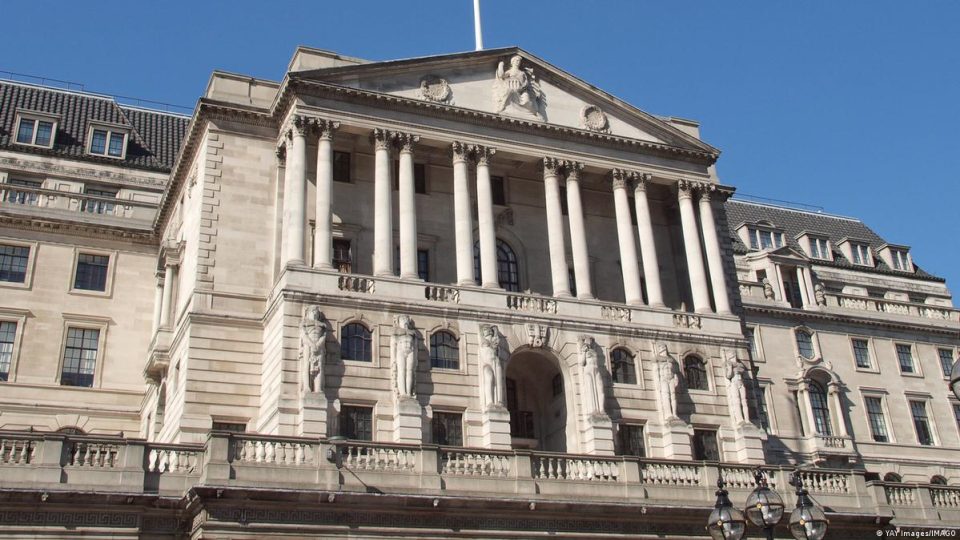The Bank of England on Thursday raised its benchmark interest rate by 0.75 percentage points to 3%, the biggest single increase in more than 30 years, as it said the UK could slip into recession since records began.
The central bank warned of a prolonged contraction with high inflation and unemployment in the next few years. Its forecast recession will last for eight consecutive quarters and shrink gross domestic product (GDP), making it the UK’s longest recession, although it is less deep than the recessions in 2008–2009 and before the 1980s.
“The latest forecast from the MPC (Monetary Policy Committee) describes a very challenging outlook for the UK economy. The World Bank noted that the UK economy is expected to be in recession for a prolonged period, with CPI (Consumer Price Index) inflation remaining high above 10% in the short term.
Higher interest rates mean borrowing costs are at their highest levels since the 2008 financial crisis, and the cost of living is rising at the fastest pace in 40 years, leaving households struggling to pay their bills.
A recession is defined as a country’s economy shrinking for two consecutive months, meaning companies make less money, wages fall, and unemployment rises. The central bank has warned that a “challenging” downturn in the UK economy is expected to last into the first half of 2024 next year.
Responding to the Bank of England’s outlook, Chancellor Jeremy Hunt said inflation was an “enemy” that “hit families, pensioners and businesses hard” and that the government’s priority was to “control inflation”.
Rising interest rates make borrowing more expensive, so they are expected to encourage people not to spend, easing price and inflationary pressures.
While savers will welcome the latest rate hike, it will have knock-on effects on household mortgages, debt repayments and bank lending, lowering the overall forecast for households. Amara Raja Batteries Hits 10%, Heavy Volumes on Q2 Results.
In Friday’s intra-day trade, the shares of Amara Raja Batteries soared 10% to Rs 571.75 on the Bombay Stock Exchange on the back of heavy volumes just after the company had testified strong September quarter results with Profit Before Tax (PBT), up 43% at Rs 276.52 crore the previous year quarter. On a sequential basis, PBT hiked to 56%.
At 09:33 in the morning, the stock traded 9.7% higher at Rs 570.35, compared to a 0.10% rise in the S&P BSE Sensex. The average trading volumes at the counter poured over 10-fold today. A combined 5.7 million shares altered hands on the NSE and BSE.
The company’s operating income jumped 19% year-on-year (YoY) and 3% on quarter-on-quarter (QoQ) to Rs 2,699 crore. Earnings Before Interest, Taxes, Depreciation, and Amortization (EBITDA) in Q2FY23 resulted in Rs 360 crore with corresponding EBITDA margins at 13.3%, up 330 bps QoQ.
The company has also professed an interim dividend of Rs 2.9 per share with a record date of 16th November 2022.
Amara Raja Batteries said the company witnessed healthy demand in the automotive sector from the aftermarket and OEM segments. Exports showed healthy growth in the Middle East and South East Asian markets. Industrial battery volumes sustained their upswing, particularly in the telecom section, driven by 5G rollout preparations in India. The management is hopeful that the economic drivers will continue stable soon.
As part of the Energy & Mobility strategy proclaimed by the company last year, Amara Raja was at the forefront of founding the domestic manufacturing eco-system for progressive energy storage skills, plus Li-ion cells and packs for E-mobility and stationery energy storage requests.
To further reinforce its efforts, the company announced the amalgamation of a wholly-owned subsidiary that would set up a multi-gigawatt-hour lithium-ion cell manufacturing ability.
Amara Raja Batteries’ margin growth for the quarter was led by a decline in raw material costs, down by 390 bps QoQ amid a 10% decline in lead prices in rupee terms over the last two quarters.






